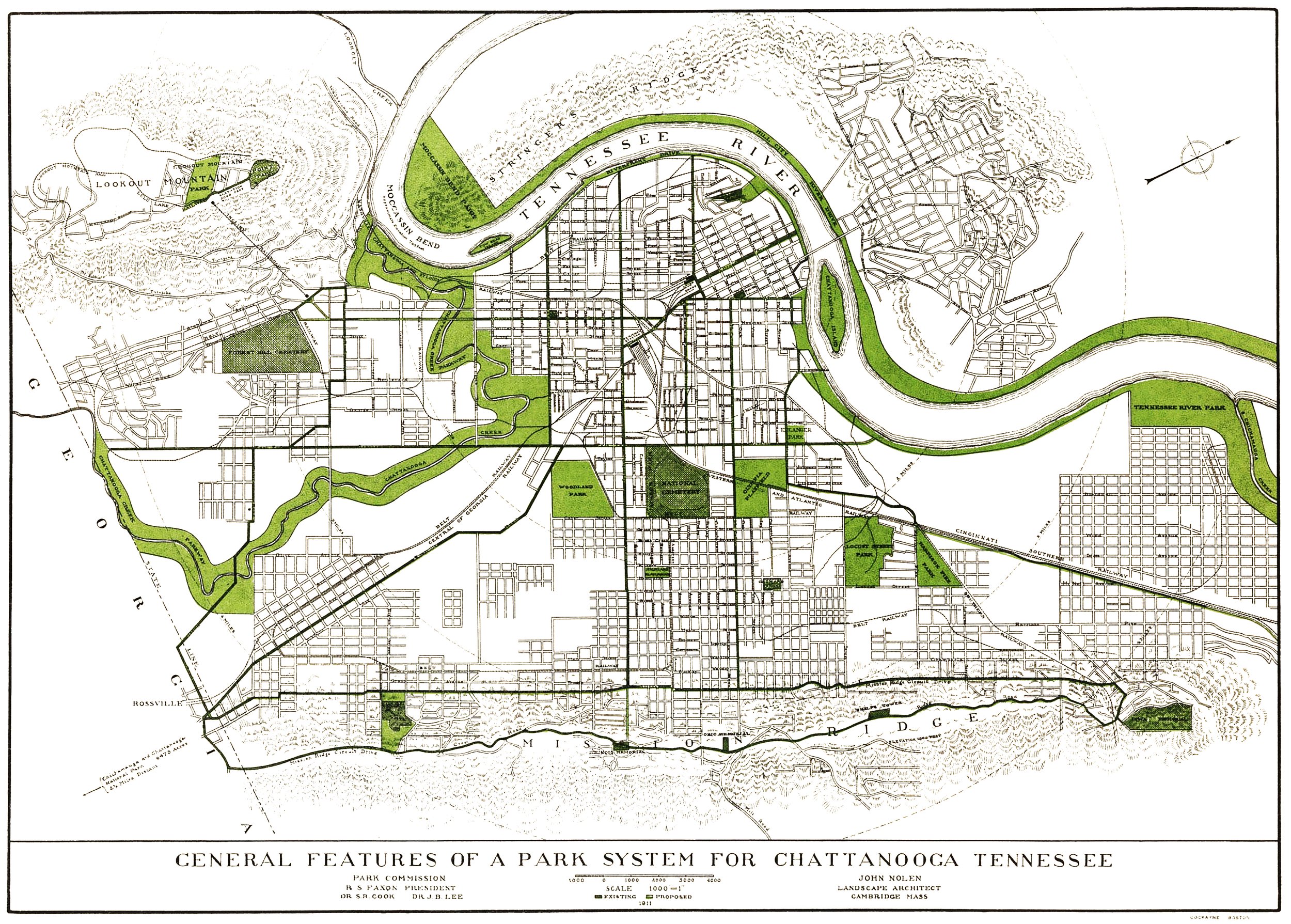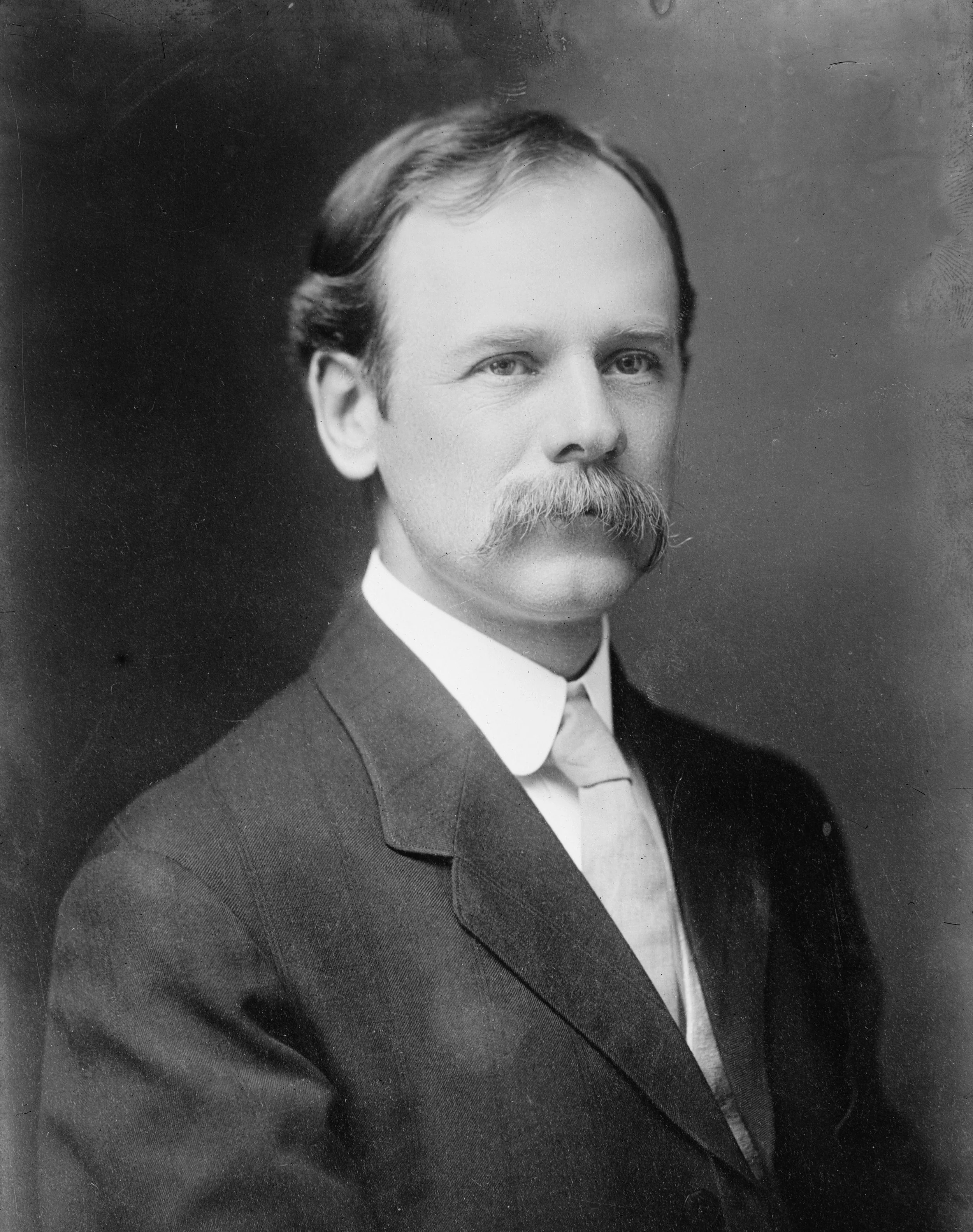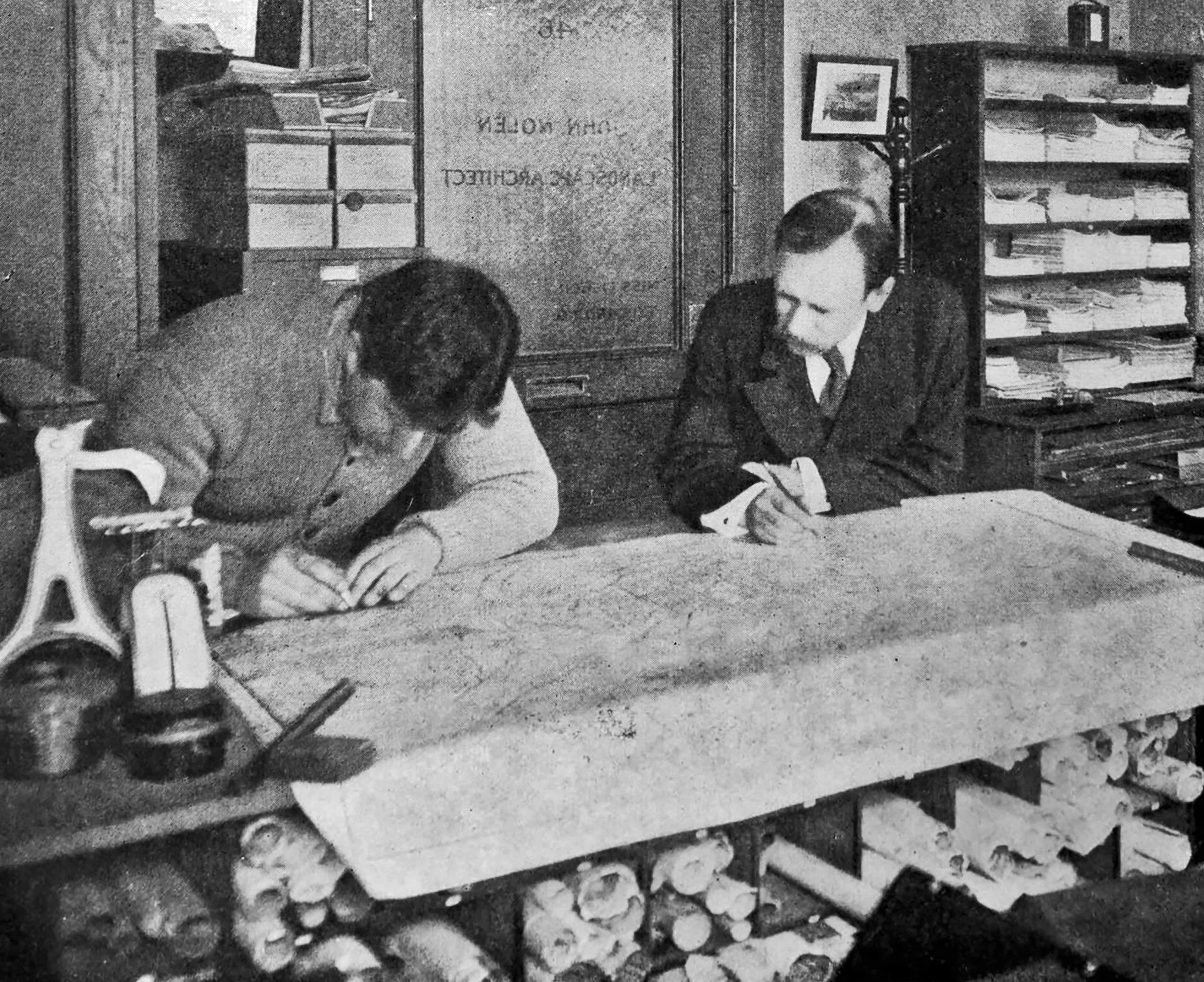
…The opportunity that confronts a city to create a comprehensive system of parks is seldom equaled, but Chattanooga is growing steadily, and the value of land is rising rapidly. Therefore, if large and satisfactory results are to be secured, action must be prompt and business-like. It is doubtful if the preparation of park plans could have been undertaken at a more opportune time.
— John Nolen, 1911
John Nolen
John Nolen (1869–1937) was a pioneering American landscape architect and city planner whose career helped shape the emerging field of comprehensive urban planning in the early 20th century. Orphaned at a young age in Philadelphia, he rose from humble beginnings, graduating first in his class at Girard College before earning a degree from the Wharton School and later pursuing landscape architecture at Harvard under the guidance of Frederick Law Olmsted Jr. and other leading figures. In 1905, he established his own practice in Cambridge, Massachusetts, quickly gaining recognition for integrating landscape design with urban planning. Nolen became a founding member of the American City Planning Institute and was active in numerous professional organizations, contributing to the broader discourse on civic improvement and town design across the United States and abroad.
Nolen's legacy includes hundreds of influential planning projects, including work in Wisconsin, California, and the American South. His role as the official landscape architect for cities like San Diego, Asheville, and Savannah showcased his ability to combine aesthetic vision with social reform ideals. By 1911, when Chattanooga engaged Nolen to create a comprehensive park plan, he had already established a national reputation for forward-thinking, equitable, and health-conscious design. His Chattanooga plan reflected a belief that parks were not merely decorative, but essential infrastructure for a livable and just city—an ethos that continues to resonate in urban planning today.
Source:
Stephenson, R. Bruce. John Nolen: Landscape Architect and City Planner. Charlottesville: University of Virginia Press, 2021.
1911 Chattanooga Plan
The impetus for John Nolen’s 1911 comprehensive park plan for Chattanooga arose from a growing recognition among civic leaders and reformers that the city’s rapid growth and urbanization had outpaced its public amenities—particularly its parks and recreational infrastructure. At the dawn of the 20th century, Chattanooga was booming in population, industry, and wealth, yet lagged significantly in providing green spaces for public health, recreation, and civic identity. With fewer than 100 acres of municipal parkland, no organized playgrounds, and little in the way of scenic parkways or neighborhood green spaces, the city’s leaders acknowledged that Chattanooga had “depended too much and too long upon God and the government,” referring to the surrounding federal lands like Chickamauga National Military Park and the natural scenery of Lookout Mountain. Spurred by the progressive-era City Beautiful movement and inspired by what other peer cities were accomplishing, local reformers convened a park commission and engaged nationally renowned landscape architect and planner John Nolen to create a visionary plan that would position Chattanooga among the great American cities of its time.
Nolen’s plan reflected his belief that parks were not ornamental luxuries but essential urban infrastructure for health, equity, beauty, and long-term prosperity. Drawing from both his American and European planning experiences, Nolen proposed a citywide network of small neighborhood parks, large scenic reservations like Moccasin Bend and “Woodland Park,” (now Montague Park) riverfront parkways along the Tennessee and South Chickamauga Creek, improved schoolyards, and thoughtfully planted boulevards to connect it all. His report emphasized urgent land acquisition, flexible implementation strategies, and citizen involvement, with stereopticon images illustrating a compelling before-and-after vision. The plan carried an estimated cost of $500,000—a hefty sum in those days—justified by comparisons to other cities and by Chattanooga’s own remarkable growth. Ultimately, the effort to secure widespread public support and legislative backing for a bond issue reflected a broader cultural shift: the understanding that a successful modern city must deliberately shape not just its industries and infrastructure, but also its public realm. Though not all of Nolen’s plans were realized, many did eventually come to fruition, most notably in his recommended “Woodland Park,” which would later become known as “Montague Park.”
Sources:
Stephenson, R. Bruce. John Nolen: Landscape Architect and City Planner. Charlottesville: University of Virginia Press, 2021.
"Parks and Playgrounds – Mass Meeting Tonight." Chattanooga Daily Times, March 23, 1911, p. 12.


